The reconstruction of the skeleton of a sperm whale at the Museum of Natural Sciences in Bergamo enriches and complements the exhibition according to a project to illustrate the evolution of life on earth.
Cetaceans are indeed a fundamental and monumental testimony (not just for size!) of this path. Mammals are adapted to aquatic life, and, under appearances that evoke appearance and movements fish, conceal typical characteristics of mammals such as the limbs which, although greatly modified for swimming, maintain a skeletal structure similar to that of our hands!
The actual project began to take shape in May 2008 when a young female sperm whale about 10 feet long and weighing 12 tons was sighted, beached at Piombino. After the first surveys carried out by the University of Siena and post-mortem examinations carried out by the Department of Veterinary Medicine, University of Padua, it was possible the recovery of skeletal parts. Thus began by the museum staff a challenging task of cleaning, degreasing, bleaching and consolidation of the bone structure to allow, with a highly specialized work, the installation of the entire skeletal system.
At the same time also the exhibition hall was enlarged in its entirety, including moments of depth, as well as the sperm whale, and on cetaceans in general, even on fundamental issues for museums of natural sciences, such as the protection of species at risk of extinction. Among the exhibits you see a monk seal, a manatee and the reconstruction of a plaster of Ritina Steller. And ‘This is a particularly emblematic species of the fragility of marine mammals, as extinct after only 27 years after his first sighting. Underlying these issues and make known the measures of protection adopted today for the benefit of endangered species is important task of natural science museums and enriches, as a moment of reflection, the new exhibition space.
{rokbox album=|album| title=|Un Capodoglio a Bergamo|}images/stories/museo/ESPOSIZIONI/03_ZOOLOGIA/Capodoglio/*{/rokbox}


